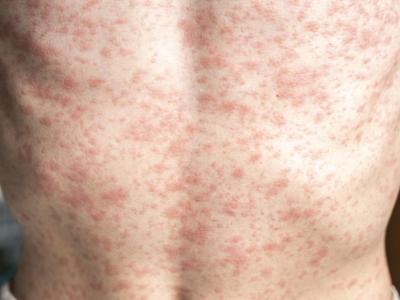May 23, 2012
Study: Canine influenza H3N2 can spread to cats
In a laboratory study, the canine influenza virus (CIV) H3N2 spread from dogs to cats via respiratory droplets, suggesting that cats could be another host for the virus, according to a report published today in Influenza and Other Respiratory Viruses. CIV H3N2 originated in birds and was first reported in 2007, says the report by a team of South Korean and US scientists. The team assessed interspecies aerosol transmission by infecting four dogs intranasally with the virus and then housing cats and ferrets in cages a few inches away. In addition, the team infected two cats and three ferrets intranasally and then placed them in cages with uninfected animals of the same species. All the intranasally infected animals got sick with respiratory signs, but the illness was milder in the ferrets than in the cats and dogs. The cats housed near the infected dogs showed respiratory signs and shed virus after 9 days of exposure, but the
ferrets housed near the dogs stayed healthy. Uninfected cats caged with infected cats got sick, but the naive ferrets housed with infected ferrets stayed well. "These data suggest that cats, in addition to dogs, can be another susceptible host of CIV H3N2; ferrets may not be susceptible host but may be susceptible after viral adaptation," the researchers write. They say the transmission of the virus between dogs and cats "underscores the concern that these same viruses might also be able to infect humans who come in contact with the animals."
May 23 Influenza Other Respi Viruses abstract
NACCHO survey profiles recent public health job and program cuts
Funding losses for local health departments that began in 2008 continue to deepen, according to the latest survey from the National Association of County and City Health Officials (NACCHO). The latest estimate on health department job losses and program cuts, the seventh in a series, came from a NACCHO survey of 957 randomly selected departments conducted in January and February 2012. NACCHO got responses from 663 health departments in 47 states, a response rate of 69%. In 2011, 57% of health departments reduced or eliminated services in at least one program, the largest percentage in any 12-month period since the recession began in 2008, according to the report. Clinical health services, emergency preparedness, and maternal and child health programs were the areas most often cut. Nearly two-thirds of the US population lives in an area experiencing at least one program area cut, while 39% reside in areas reporting three
or more program area decreases. Funding constraints pushed health departments to shed more than 5,000 staff positions during the second half of 2011, more than triple the number they gained. Since 2008, the nation's local health departments have lost nearly 40,000 workers. Forty-one percent of health departments said they expect cuts in next year's budget. NACCHO said that though similar percentages (38% to 45%) of health departments report losses from year to year of the survey, cuts in one year often compound those in prior years. For example, it said continuing cuts in food safety programs might shrink the number of restaurant inspections that can be done.
May NACCHO research brief
Disease mapping system expands to new users
In a move designed to spur new research on infectious disease transmission, bioinformatics experts at The Ohio State University are expanding Supramap, a web-based application that was first launched in 2007, according to a press release from the Ohio Supercomputer Center. Supramap is a web-based application that synthesizes large, diverse datasets to help researchers better understand the spread of infectious diseases across hosts and geographic areas. For example, the system allows users to track strains carrying key mutations in a geospatial browser such as Google Earth, allowing scientists to update and view maps as pathogens evolve and spread. The system has been used to track the spread of the 2009 H1N1 virus and H5N1 avian influenza, as well as antiviral-resistant H1N1. The expansion will involve separating Supramap's client application from its server software, which will allow researchers to develop other applications that make use
of the system's logic and computing resources. Researchers described the Supramap changes in a May 21 report in the journal Cladistics. To test the new changes, they tracked mutations in H7 avian influenza. Ward Wheeler, PhD, who coauthored the report and is curator-in-charge of scientific computing at the American Museum of Natural History, said in the press release that the changes provide a modular web service for an open-source phylogenetic analysis program that can be used by other groups for new purposes.
May 22 Ohio Supercomputer Center press release
May 21 Cladistics abstract
Supramap Web site
WHA approves Chan for second term as WHO director-general
The World Health Assembly (WHA) today voted to approve Margaret Chan, MD, for a second 5-year term as the World Health Organization (WHO) director-general, according to a WHO news release. In January the WHO's executive board nominated Chan for a second term, and the nomination was submitted to the WHA for approval. She was the only candidate proposed to the executive board, according to an earlier statement. In her acceptance speech today, Chan reiterated her support for universal health coverage as a powerful public health tool. She said the biggest challenge over the next 5 years is to lead the WHO in a manner that will help continue the momentum for better health that began at the start of the century. "The future of funding for international health development is uncertain, she said. "If we let down our guard, slacken our efforts, problems that are so close to being brought under control will come roaring back." Chan, from
the People's Republic of China, first joined the WHO in 2003. The director-general is the WHO's chief technical and administrative officer, and officials elected to the position oversee the organization's international health policy work. Chan's new term begins on Jul 1 and runs through Jun 30, 2017.
May 23 WHO news release
Jan 18 WHO news release

















